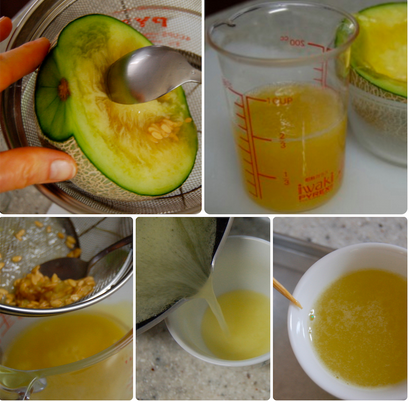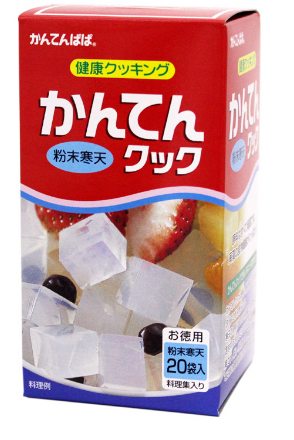
Luscious, ripe melon bursting with delicious juice… Not wanting to waste a single drop, I scrape the seeds into a strainer set over a bowl to collect the juice… to make aspic.
In Japan, fresh fruit is often a gift item, especially melons that can be exceedingly expensive. Even in ordinary supermarkets where home cooks shop to serve their families, melons such as the Kumamoto-grown Andes melon you see pictured here can fetch the equivalent of $20 a piece! Not wanting to waste a single drop of the precious, delicious juice that trickled out when I cut the melon in half, I made refreshing aspic from it.

寒天 Kanten
Known as agar-agar in most English-speaking countries, kanten is shelf-stable, unlike its perishable predecessor tokoroten, a stiff jelly processed from aquatic plants called tengusa. Traditionally kanten had been sold in sticks that needed to be soaked, softened and shredded before using. Nowadays, kanten is sold in convenient powdered form. Typically sold in Asian grocery stores in boxes of smaller packets (the one pictured here contains 20, four-gram/2-teaspoon packets), each for use with about 200 cc (about 4/5 American-sized cup) liquid.
DOWNLOAD recipe for MELON kanten




